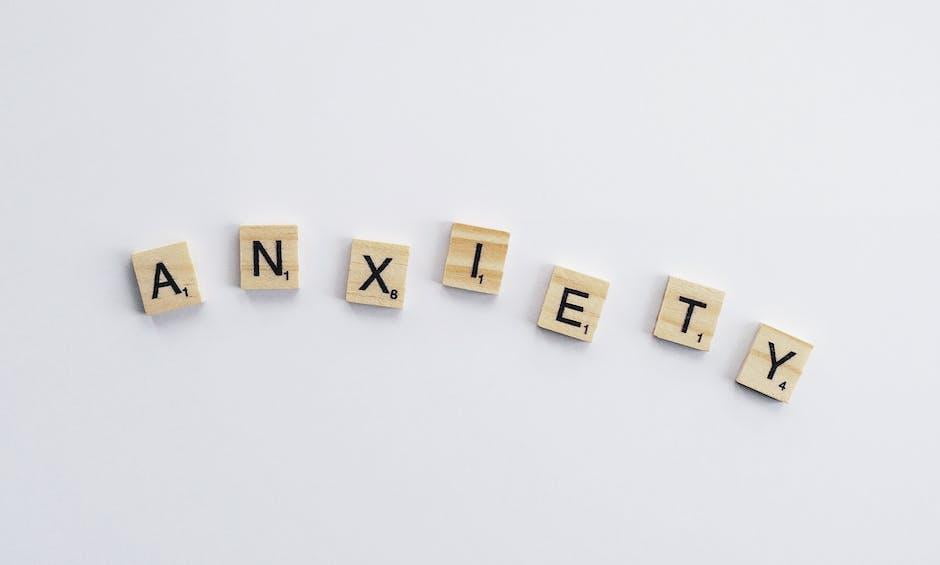Turning anxiety into awareness and action is like turning a storm into a breeze—it’s challenging, but it’s possible. Anxiety, often seen as a roadblock, can actually be a powerful tool for growth and change. By understanding its roots, embracing its lessons, and channeling its energy, we can transform it into something meaningful. If you’ve ever felt overwhelmed by your worries, keep reading. This guide will show you how to flip the script on anxiety and use it as a force for good.
Key Takeaways
- Anxiety is a natural response but can become overwhelming if left unchecked.
- Awareness is the first step in transforming anxiety into action.
- Small, consistent efforts can lead to significant change.
- Youth leadership and creative solutions are vital for addressing global challenges.
- Building resilience is key to maintaining progress and overcoming setbacks.
Understanding Anxiety and Its Impact
Defining Anxiety and Its Role in Modern Life
Anxiety is like that annoying car alarm that won’t stop blaring—it’s loud, persistent, and hard to ignore. It’s your body’s way of saying, “Hey, something’s not right!” In small doses, anxiety can be helpful. It keeps you alert and prepared. But when it takes over, it can feel like you’re drowning in a sea of “what-ifs.”
In today’s fast-paced world, anxiety has become a common companion. Deadlines, social pressures, and global issues all contribute to this growing wave of unease. Understanding anxiety is the first step toward managing it.
The Connection Between Anxiety and Awareness
Here’s the twist: anxiety and awareness are two sides of the same coin. Anxiety forces you to pay attention. It shines a spotlight on what’s bothering you, whether it’s a personal issue or a global crisis. By leaning into that awareness, you can uncover insights and solutions you might have missed.
Recognizing Eco-Anxiety and Its Prevalence Among Youth
Eco-anxiety, or the fear of environmental doom, is hitting young people hard. Imagine being 16 and worrying not just about exams but also about the planet’s future. It’s a heavy burden. According to this article, eco-anxiety is a growing concern, especially among Gen Z. But here’s the good news: this anxiety can be a catalyst for action.

Turning Anxiety Into Awareness
Identifying the Root Causes of Anxiety
To tackle anxiety, you need to know where it’s coming from. Is it fear of failure? Uncertainty about the future? Or maybe it’s the constant barrage of bad news? Pinpointing the cause helps you address the problem head-on.
Transforming Negative Emotions Into Insight
Recognizing Patterns and Triggers
Think of anxiety as a detective. It leaves clues—patterns and triggers that reveal what’s really bothering you. Maybe you notice your anxiety spikes after scrolling through social media or before a big presentation. Recognizing these patterns is like finding the map to a hidden treasure.
Using Mindfulness to Build Awareness
Mindfulness is your secret weapon. It’s like hitting the pause button on a chaotic movie. By focusing on the present moment, you can quiet the noise in your head and see things more clearly. Practices like deep breathing and meditation can help. For more tips, check out this guide.
The Role of Education in Fostering Awareness
Education is a game-changer. Schools and communities can teach young people how to manage anxiety and turn it into action. Programs that focus on mental health and environmental awareness are crucial. As highlighted in this post, education empowers individuals to make informed decisions and take meaningful steps.

From Awareness to Action
The Power of Small, Consistent Actions
Examples of Individual Contributions
Small actions can make a big difference. Think about recycling, reducing water waste, or supporting local businesses. These may seem minor, but they add up over time.
Collective Efforts and Community Impact
When individuals come together, the impact multiplies. Community clean-ups, tree-planting drives, and advocacy campaigns show how collective efforts can create lasting change.
Youth Leadership as a Catalyst for Change
Inspiring Stories of Young Activists
Young people are stepping up in incredible ways. Take Greta Thunberg, for example. Her journey from a concerned teenager to a global climate leader is nothing short of inspiring. Stories like hers remind us that age is just a number when it comes to making a difference.
Strategies for Empowering the Next Generation
Empowering youth means giving them the tools and platforms to lead. Mentorship programs, workshops, and open dialogues can help. For more ideas, explore this resource.
Creative Solutions to Global Challenges
Reducing Food Waste Through Community Initiatives
Food waste is a massive issue, but communities are finding creative solutions. From food-sharing apps to composting programs, these initiatives show how innovation can tackle big problems.
Innovative Approaches to Sustainability
Sustainability doesn’t have to be boring. Think solar-powered backpacks, biodegradable packaging, or even edible coffee cups. Creativity can turn challenges into opportunities.

Building Resilience and Overcoming Challenges
Developing Skills to Manage Stress and Anxiety
Techniques to Boost Mood and Reduce Stress
Simple techniques like exercise, journaling, and spending time in nature can work wonders. Need more ideas? Check out this article.
Building Emotional Resilience for Activists
Activism can be emotionally draining. Building resilience means learning to bounce back from setbacks and stay motivated. Support networks and self-care are essential.
Overcoming Barriers to Taking Action
Addressing Fear of Failure
Fear of failure is a common roadblock. But here’s the thing: failure is just a stepping stone to success. Every mistake is a lesson in disguise.
Turning Setbacks Into Opportunities
Setbacks are like plot twists in a movie—they make the story more interesting. Instead of giving up, use them as opportunities to learn and grow.
Envisioning a Brighter Future
The Role of Optimism in Driving Change
Optimism is the fuel that keeps the engine running. Believing in a better future inspires action and keeps hope alive.
Creating Space for Diverse Voices and Perspectives
Diversity is strength. By including voices from different backgrounds, we can find more inclusive and effective solutions.
Maintaining Focus on Long-Term Goals
Celebrating Progress Along the Way
Every small win deserves a celebration. It’s these moments that keep you motivated for the long haul.
Inspiring Others to Join the Movement
Inspiration is contagious. By sharing your journey, you can encourage others to take action too.
Turning anxiety into awareness and action isn’t easy, but it’s worth it. By understanding your anxiety, embracing awareness, and taking consistent steps, you can make a difference—not just in your life, but in the world around you. So, what’s your next step?
FAQ: Turning Anxiety Into Awareness And Action – Your Guide to Transformation
What does it mean to turn anxiety into awareness?
Turning anxiety into awareness involves recognizing and understanding the root causes of your anxiety. Instead of avoiding or suppressing it, you acknowledge its presence and use it as a signal to explore your emotions, thoughts, and triggers more deeply. This awareness empowers you to take control and make meaningful changes in your life.
How can anxiety be transformed into action?
Anxiety can be transformed into action by channeling the energy it creates into constructive steps. For example, if you’re anxious about a deadline, you can use that feeling as motivation to organize your tasks and start working on them. The key is to focus on small, manageable actions that address the source of your anxiety.
What are some practical steps to become more aware of anxiety triggers?
Practical steps include keeping a journal to track situations that cause anxiety, practicing mindfulness to stay present, and reflecting on patterns in your thoughts and behaviors. Over time, these practices can help you identify specific triggers and understand how they affect you.
Can mindfulness help in managing anxiety effectively?
Yes, mindfulness is a powerful tool for managing anxiety. By focusing on the present moment without judgment, mindfulness helps you break free from the cycle of overthinking and worrying. Techniques like deep breathing, meditation, and body scans can calm your mind and reduce anxiety levels.
What role does self-compassion play in this process?
Self-compassion is crucial when turning anxiety into awareness and action. It involves treating yourself with kindness and understanding, especially during difficult moments. By practicing self-compassion, you create a safe space to explore your feelings and take steps toward growth without fear of judgment or failure.
How can I differentiate between healthy and unhealthy anxiety?
Healthy anxiety serves as a natural response to challenges, motivating you to prepare and take action. Unhealthy anxiety, on the other hand, is excessive and persistent, interfering with your daily life. If your anxiety feels overwhelming or uncontrollable, it may be time to seek professional help.
What are some actionable strategies to reduce anxiety in the moment?
Strategies include deep breathing exercises, grounding techniques like the 5-4-3-2-1 method, and engaging in physical activity to release tension. These methods help calm your nervous system and bring you back to the present moment, reducing the intensity of anxiety.
How can I build resilience to prevent anxiety from taking over?
Building resilience involves developing healthy habits like regular exercise, maintaining a balanced diet, and getting enough sleep. Additionally, cultivating a strong support system, practicing gratitude, and setting realistic goals can help you better handle stress and prevent anxiety from becoming overwhelming.
When should I seek professional help for anxiety?
You should consider seeking professional help if your anxiety is persistent, severe, or interfering with your daily life, relationships, or work. Therapists and counselors can provide personalized strategies and support, while medical professionals may recommend treatments like medication if necessary.
Can anxiety ever be completely eliminated, or is it something to manage over time?
Anxiety is a natural part of life and cannot be completely eliminated. However, with the right tools and mindset, it can be effectively managed. By turning anxiety into awareness and action, you can reduce its impact and even use it as a catalyst for personal growth and positive change.



